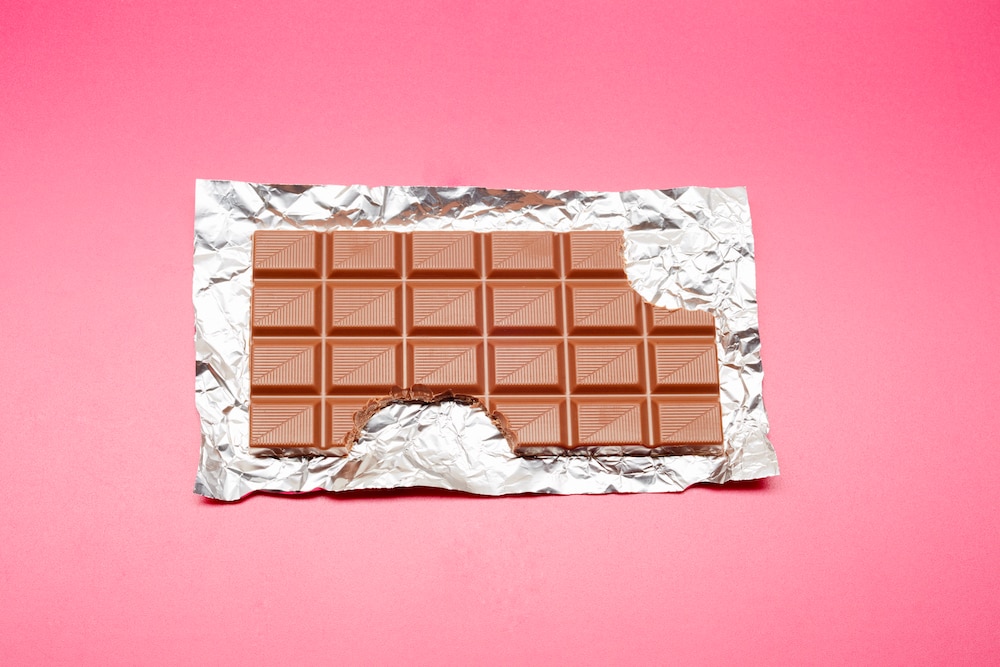Create a free profile to get unlimited access to exclusive videos, sweepstakes, and more!
Chocoholics can’t resist chocolate because science
The magic comes from microbes.

Chocolate. Nothing else lures you to the fridge in the middle of the night or gives you random cravings quite like it, and it even has its own theme park. But what gives it that unmistakable flavor that humans obviously can’t get enough of?
For thousands of years, chocolate has been processed in pretty much the same way. Something that chocoholics and oenophiles know is that both chocolate and wine can have a completely different flavor depending on its source. Chocolate can have fruity, nutty, earthy, smoky, even floral undertones depending on where the beans were grown. Another thing the flavor of the confection and the drink depends on is fermentation. Microbes are involved in that fermentation, creating the different flavors that keep us coming back for more.
If you suddenly found that unappetizing, it shouldn’t be. Food Microbiologist Jian Zhao of the University of South Wales in Australia is now trying to use the science of chocolate to upgrade production methods without sacrificing flavor. This can help chocolate manufacturers improve consistency. Understanding which microbes are behind which irresistible flavors, something Zhao has also studied in the fermentation of coffee beans and other foods, might make it possible to create chocolate like nothing you’ve ever tasted. But first, fermentation.
"Research has greatly improved our understanding of the roles of various microbes in cocoa bean fermentation, which is moving towards development of microbial starter cultures," Zhao told SYFY WIRE.
Ever tasted a raw cacao bean? The bitterness is nowhere close to a chocolate bar. The beans are high in polyphenols, compounds like flavonoids that give it that astringent taste but also act as antioxidants. This explains where dark chocolate has gotten its superfood status. Fermentation takes the edge off bitter cacao beans, which are stored in boxes or piled up and and covered with banana leaves, then left to decompose. Don’t lose your appetite yet. It is during the breakdown of the flesh inside cocoa beans that some of the most prominent flavors in chocolate come out.
Microbes remove the pulp from the bean, and more microbes — yeasts — morph its sugars into carbon dioxide and ethanol (not unlike wine). Bacteria and yeasts have different ways of fermenting the pulp that involve aerobic and anaerobic phases. Yeasts will devour fructose, glucose and sucrose in the pulp anaerobically, while bacteria use an aerobic process that breaks down the pulp and produces lactic and acetic acid that eat away at the cell walls of the bean.
"The most important group of microbes to cocoa bean fermentation are yeasts, which have an essential role in the development of chocolate flavor," said Zhao.
When enzymes in the proteins and carbohydrates of the pulp break down as they are digested by yeasts, and the embryo in the bean dies, a series of chemical reactions is set off and flavors start to develop. They also take on a more chocolatey color, which is the result of the flavonoid pigment anthocyanin. After curing, which includes fermentation and drying, the beans are shipped to manufacturers and roasted. It gets rid of the astringent smell that results from fermentation. Roasting also brings out hundreds of volatile flavor compounds (formed by the flavor precursors that emerged during fermentation) which will tempt you to take one more bonbon.
Because the spontaneous processes that happen during fermentation can vary and make flavor inconsistent, Zhao is trying to find out which microbes to culture.
"They will give us better control of the fermentation process and produce cocoa beans with improved consistency of quality," he said.
The UNSW Food Microbiology Team, led by Zhao, is collaborating with a French company to test some yeast strains that were isolated from fermentation, which there has not been much control over. Starter cultures are already used in the production of wine and the fermented foods such as coffee and soy sauce. Introducing them to the production of chocolate makes sense for consistent texture and flavor.
Imagine tasting the most sinful chocolate bar, truffle, bonbon or anything else. It’s the microbes — not just the chocolatier.


























